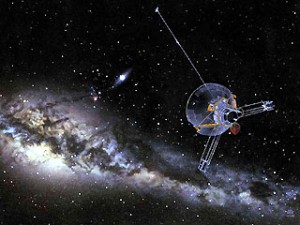Etheric.com eShop!
Cart
Search
Other sites of Interest
The Pioneer maser signal anomaly
The Pioneer maser signal anomaly:
Possible confirmation of spontaneous photon blueshifting
P. A. LaViolette, Physics Essays 18 (2005): 150-163.
Abstract
The novel physics methodology of subquantum kinetics predicted in 1979 that photons should blueshift their frequency at a rate that varies directly with negative gravitational potential, the rate of blueshifting for photons traveling between Earth and Jupiter having been estimated to average approximately 1.3 ± 0.65 X 10-18 s-1, or 1.1 ± 0.6 X 10-18 s-1 for signals traveling a roundtrip distance of 65 AU through the outer solar system. A proposal was made in 1980 to test this blueshifting effect by transponding a maser signal over a 10 AU round-trip distance between two spacecraft. This prediction has more recently been corroborated by observations of maser signals transponded to the Pioneer 10 spacecraft. These measurements indicate a frequency shifting of approximately 2.28 ± 0.4 X 10-18 s-1 which lies within 2s of the subquantum kinetics prediction and which cannot be accounted for in terms of known forces acting on the craft. This blueshifting phenomenon implies the existence of a new source of energy which is able to account for the luminosities of red dwarf and brown dwarf stars and planets, and their observed sharing of a common mass-luminosity relation.
Download: physics/0603191 (File size: 240 kB)
This paper describes the confirmation of a key prediction of subquantum kinetics, that photons in a galactic environs will continuously increase their energy over time. This paper shows how the author had pointed out to JPL scientists the idea of searching for a photon frequency blueshift in maser signals transponded between spacecraft prior to the discovery of this effect in the Pioneer 10 and Pioneer 11 maser signal data. The blueshifting rate subquantum kinetics predicted matches closely the rate that was observed; see Prediction No. 6 of Predictions Part II.
